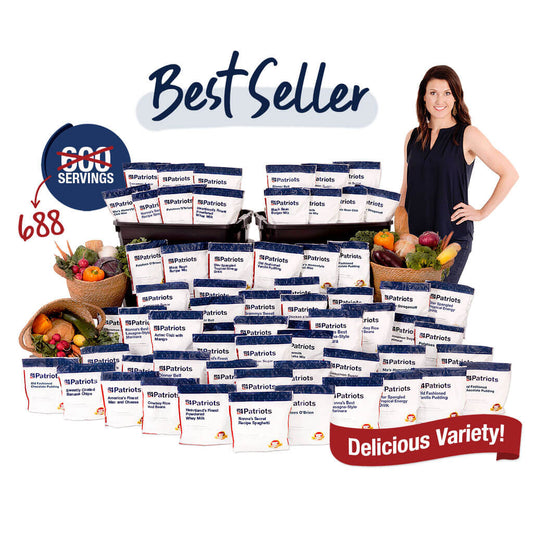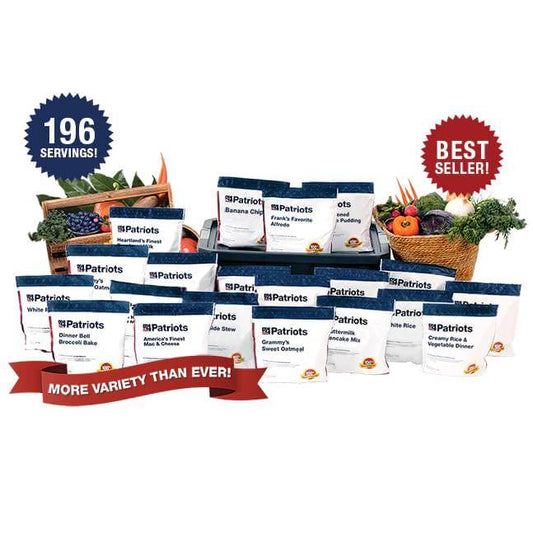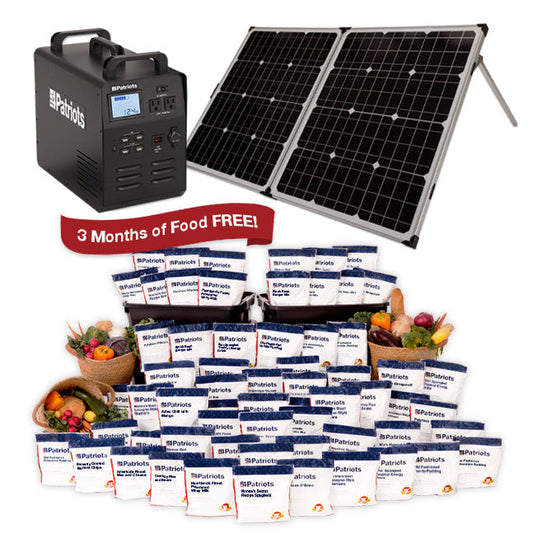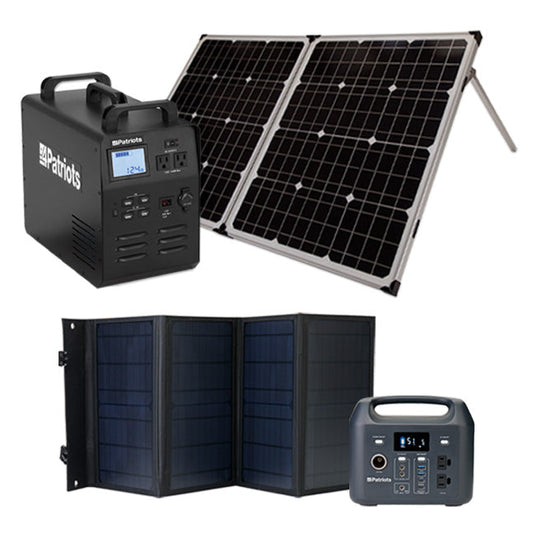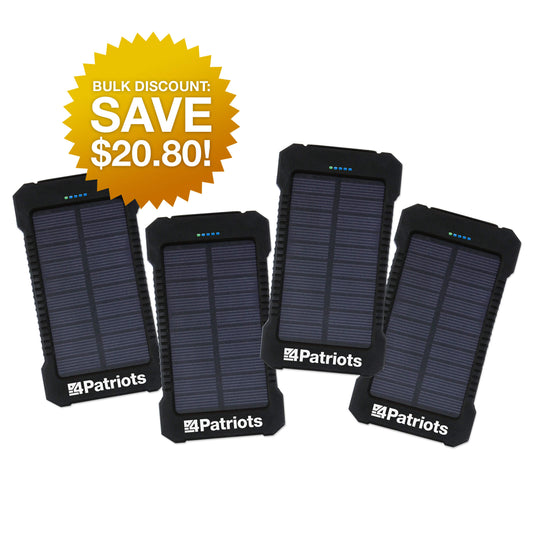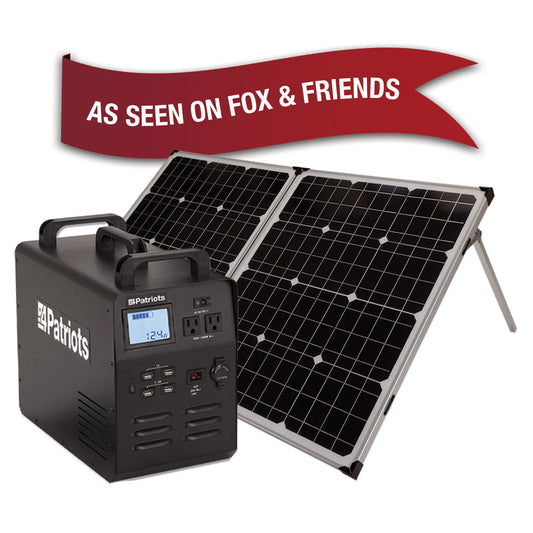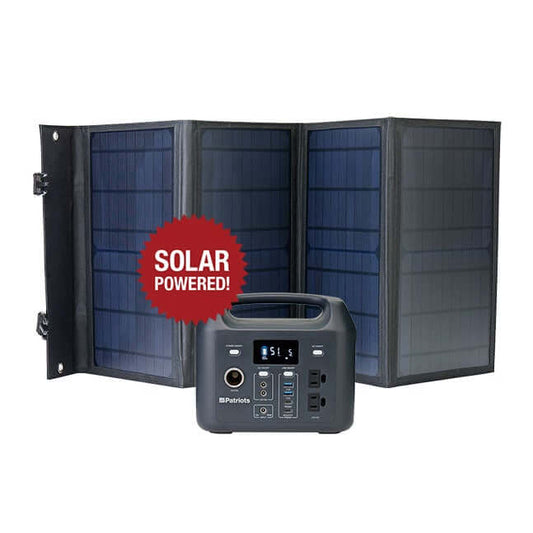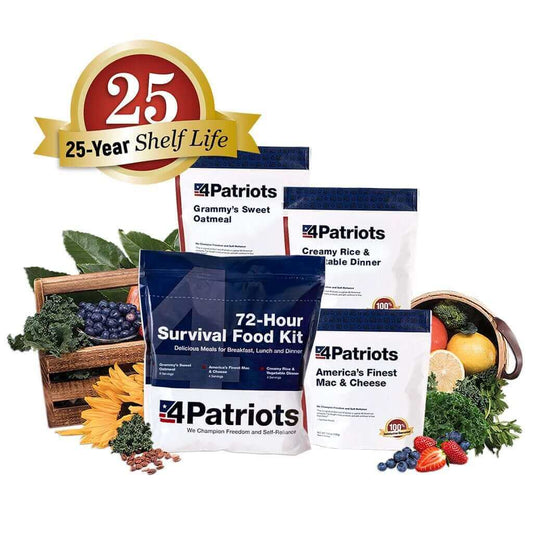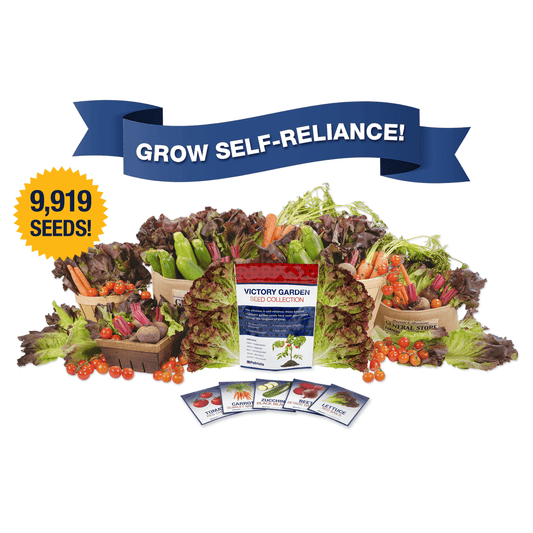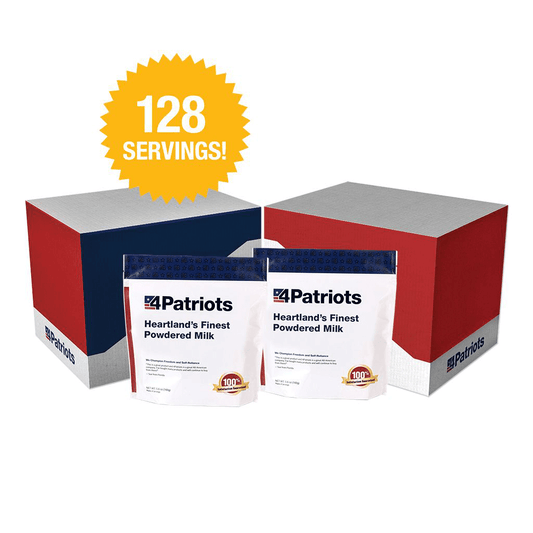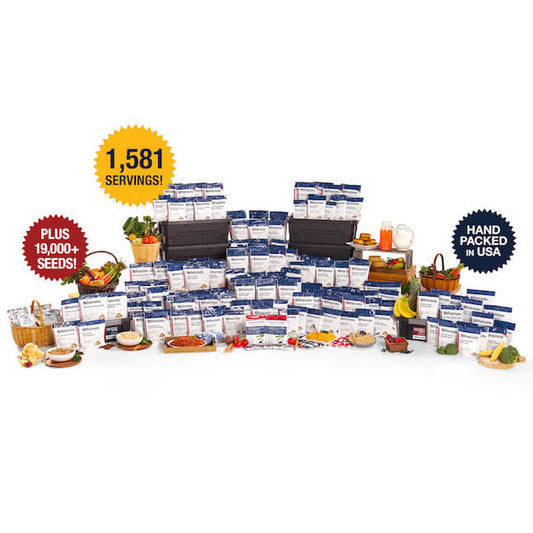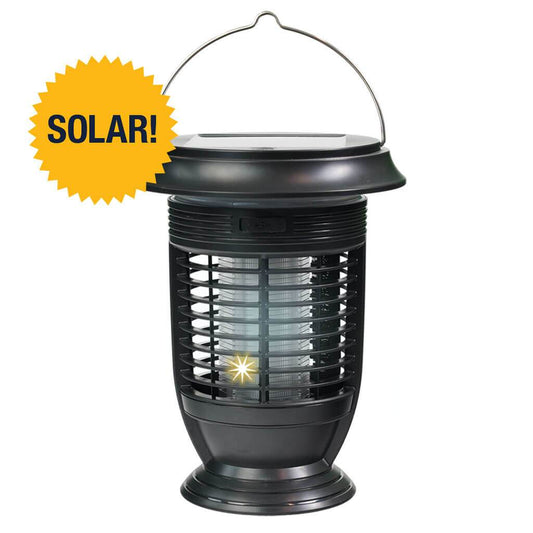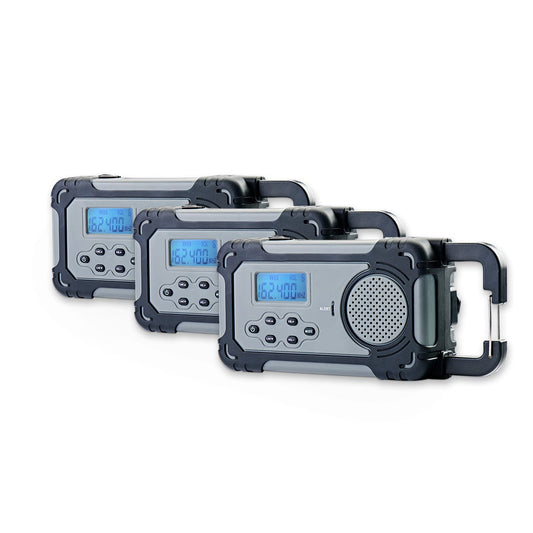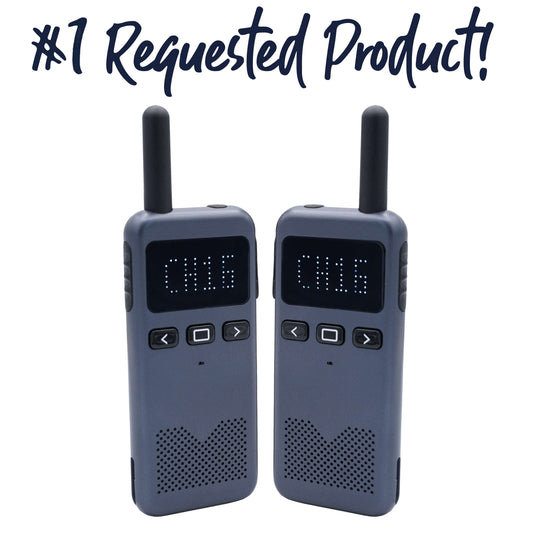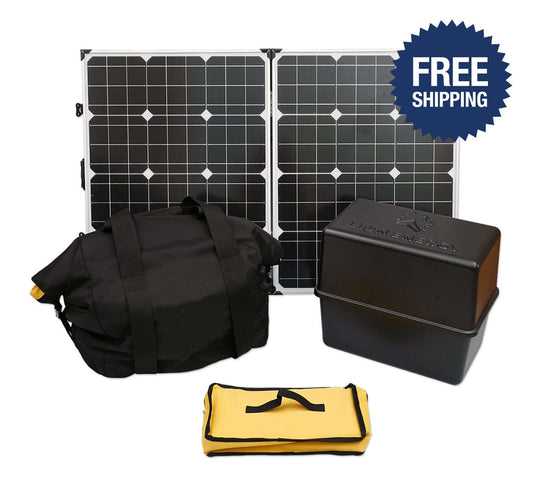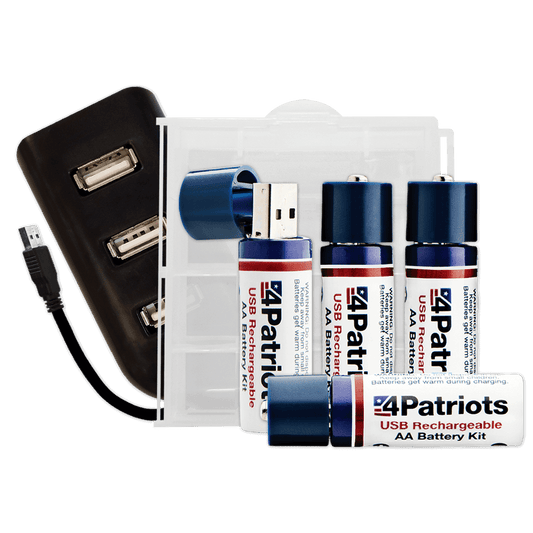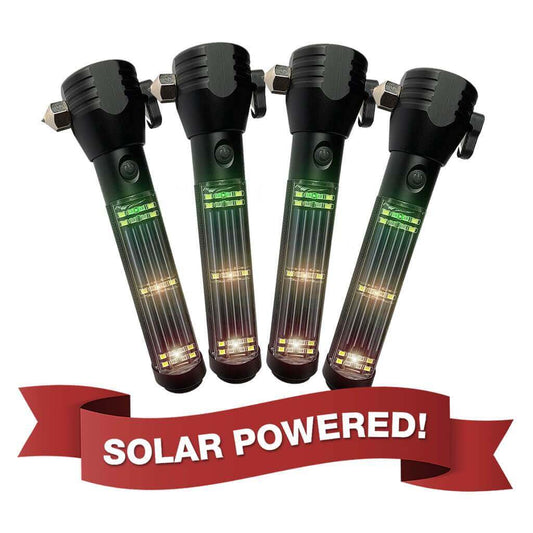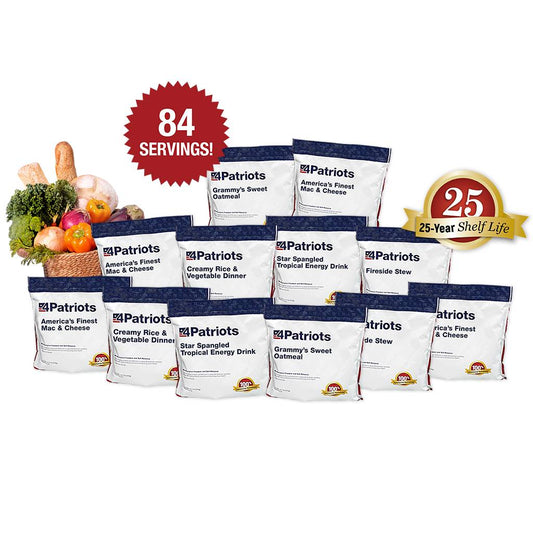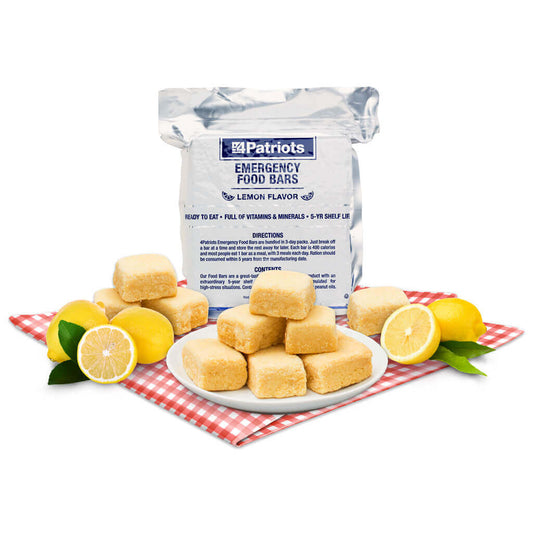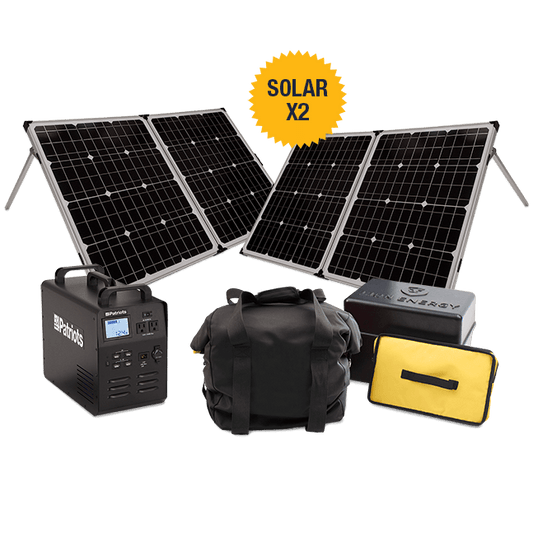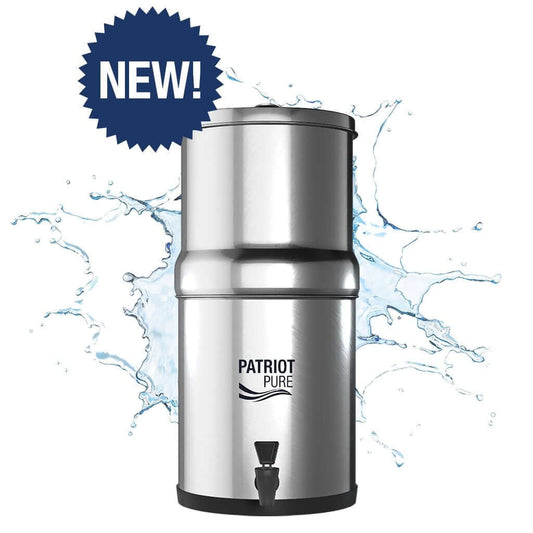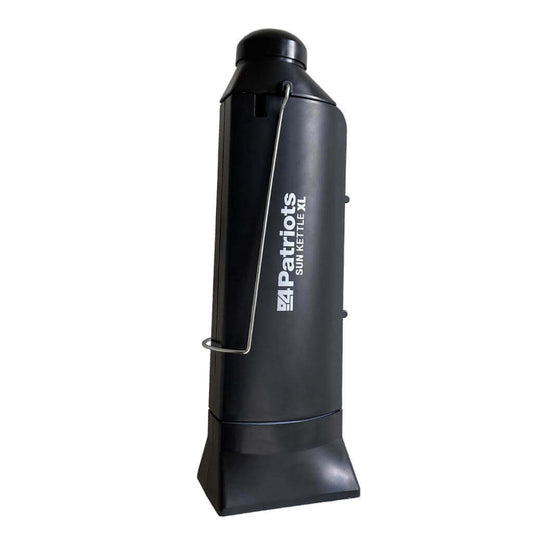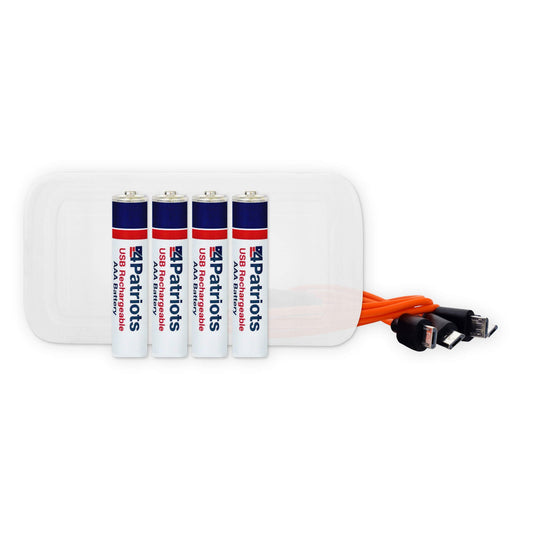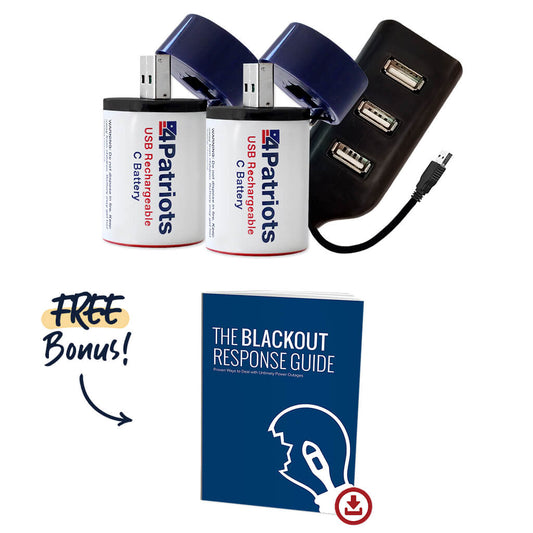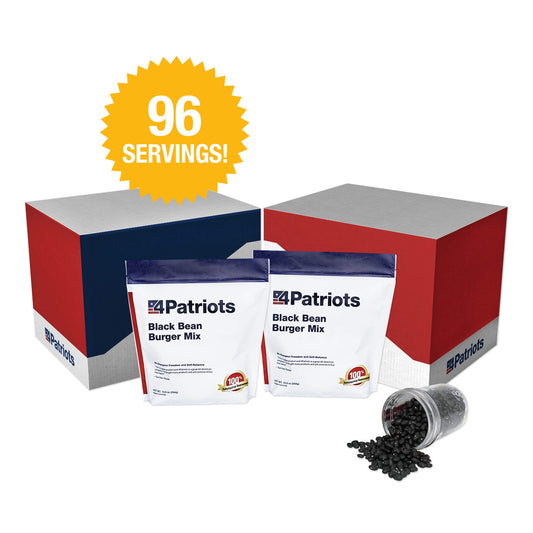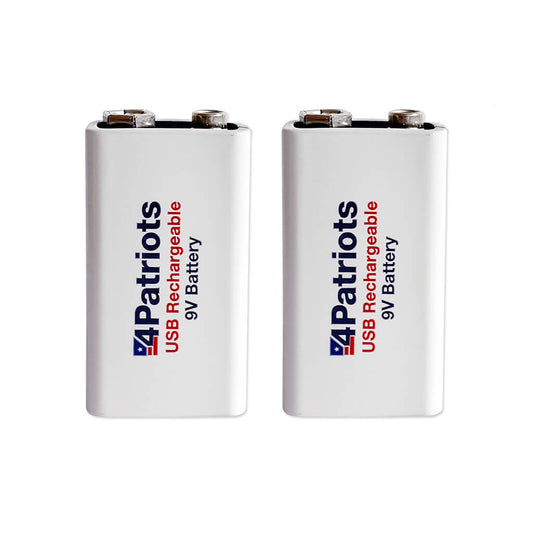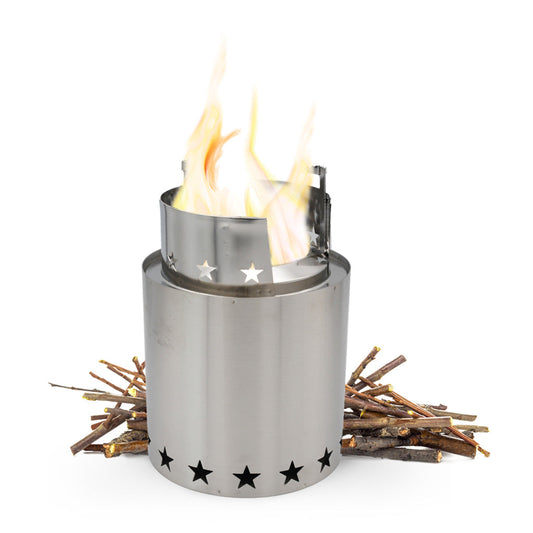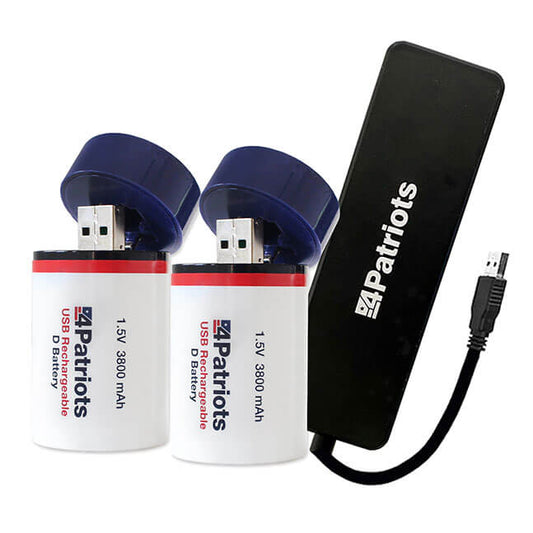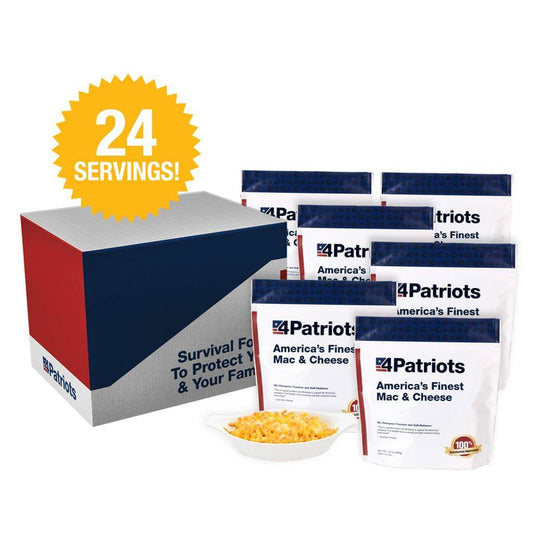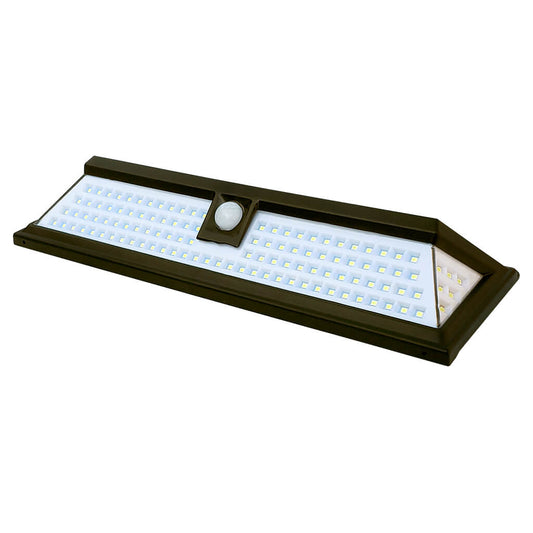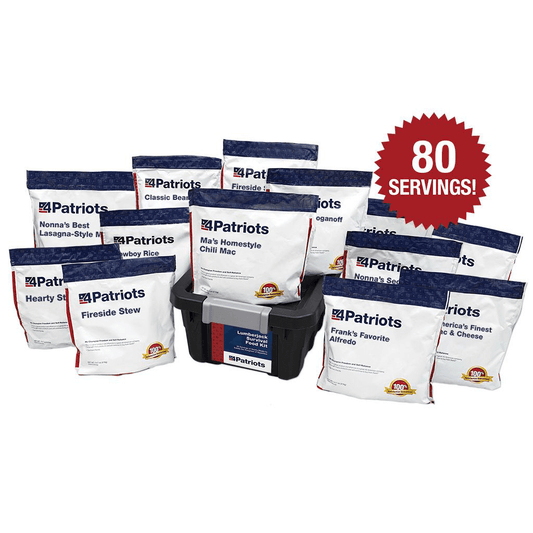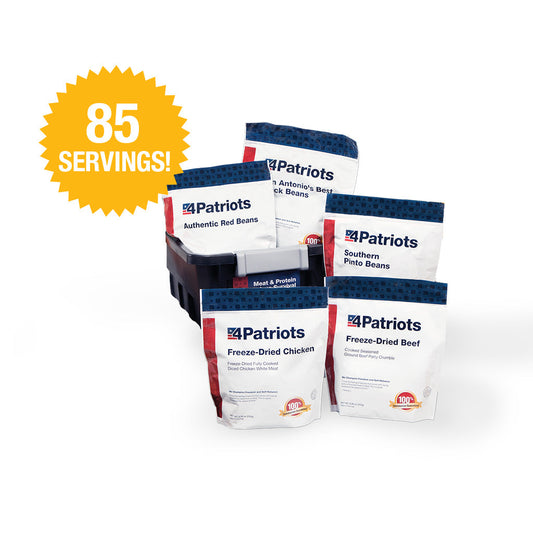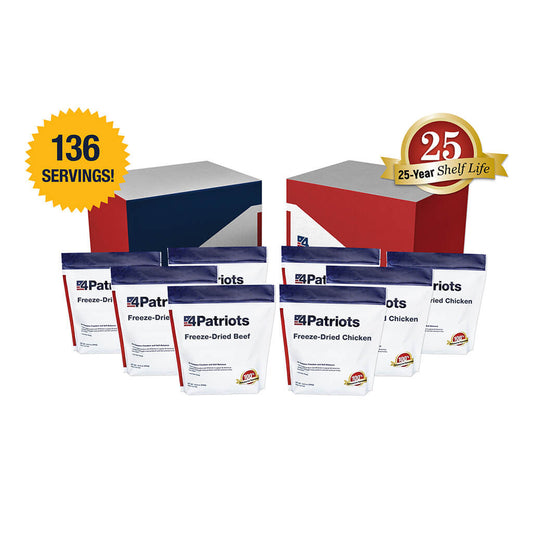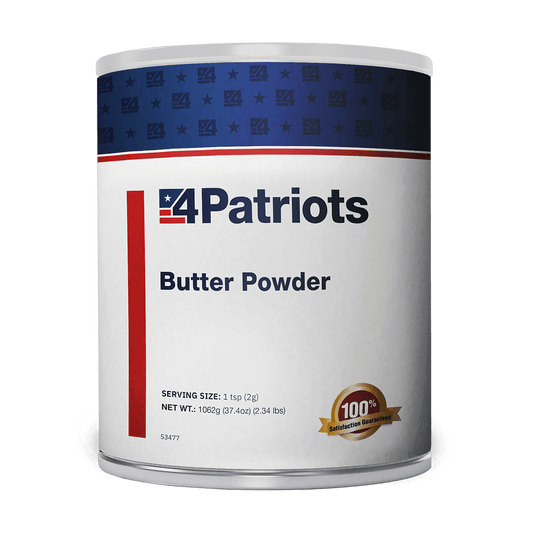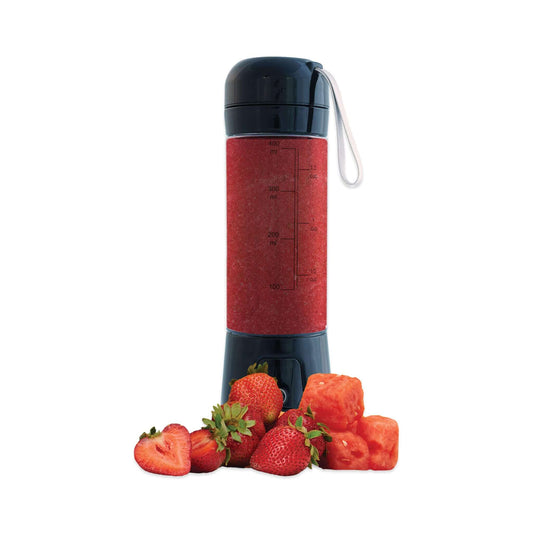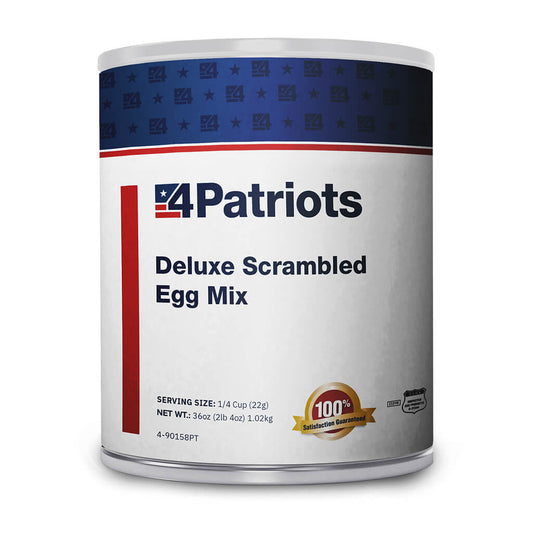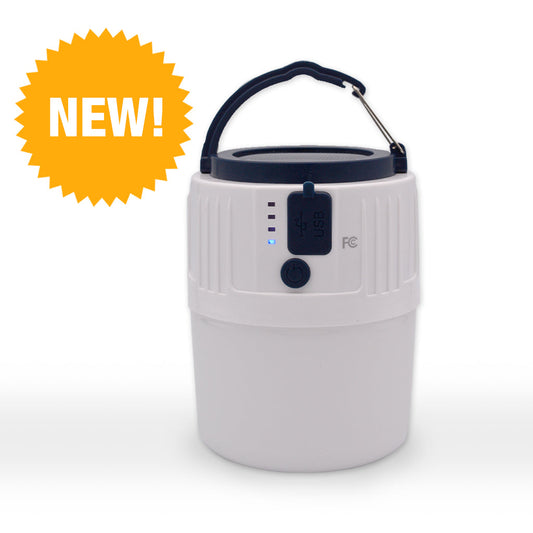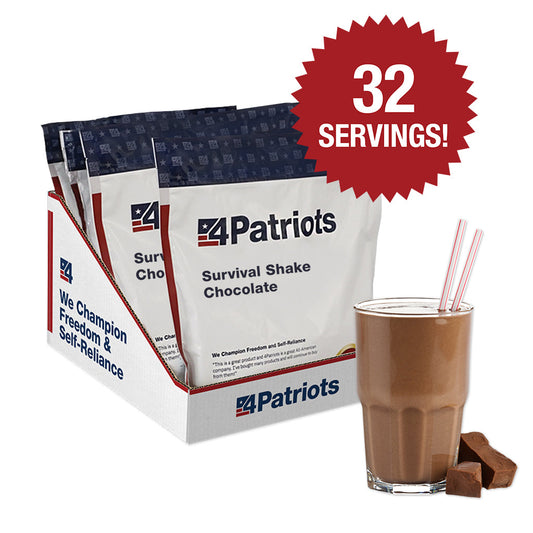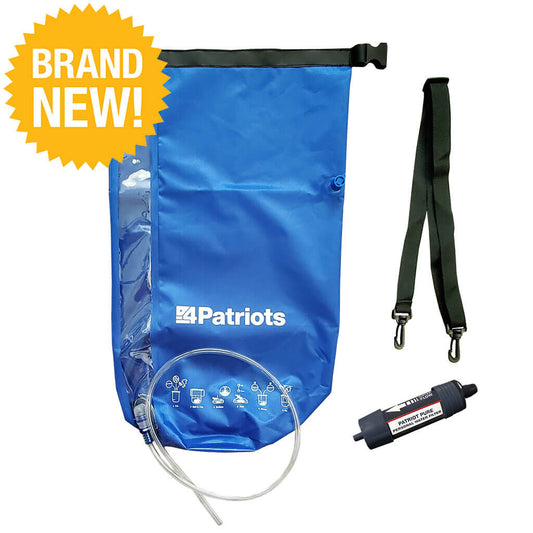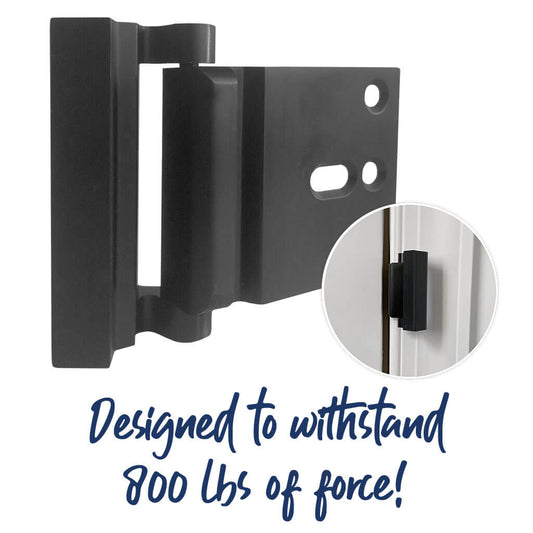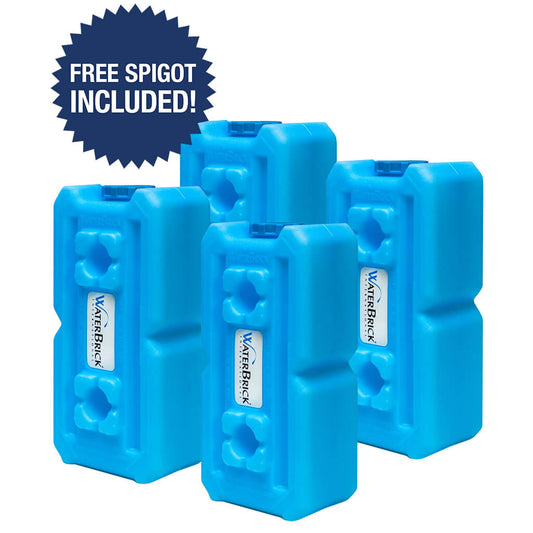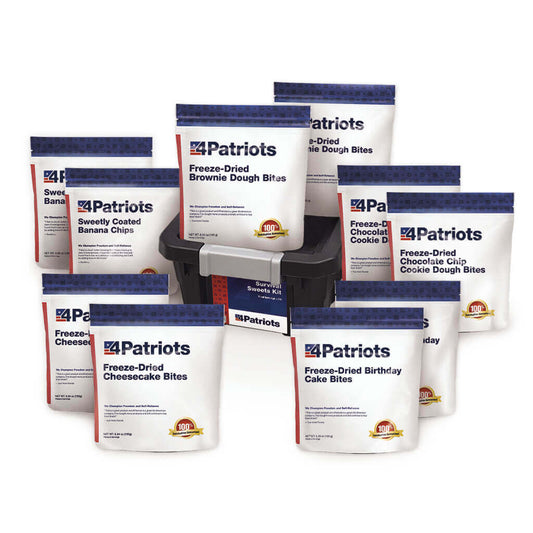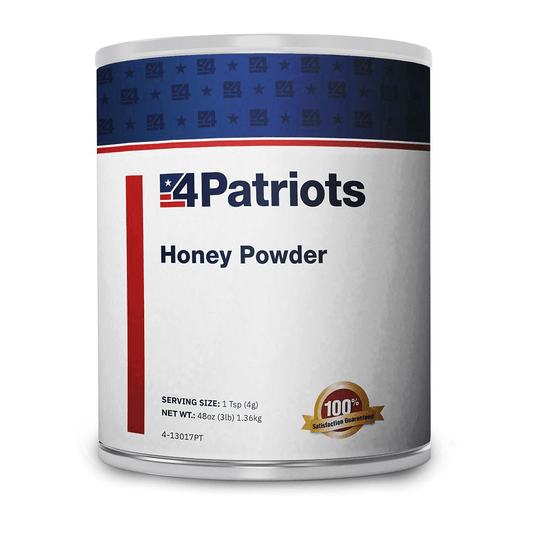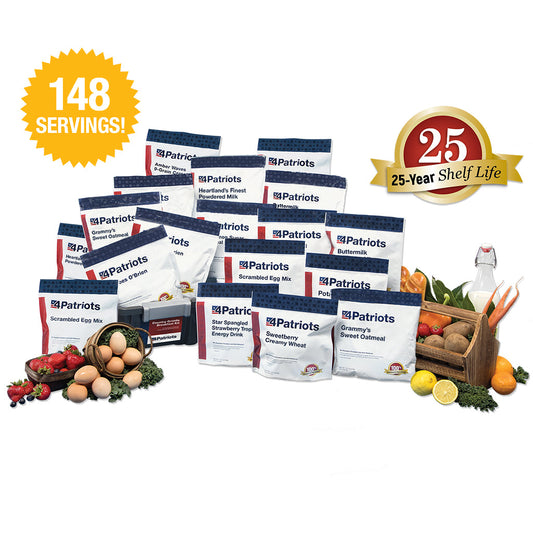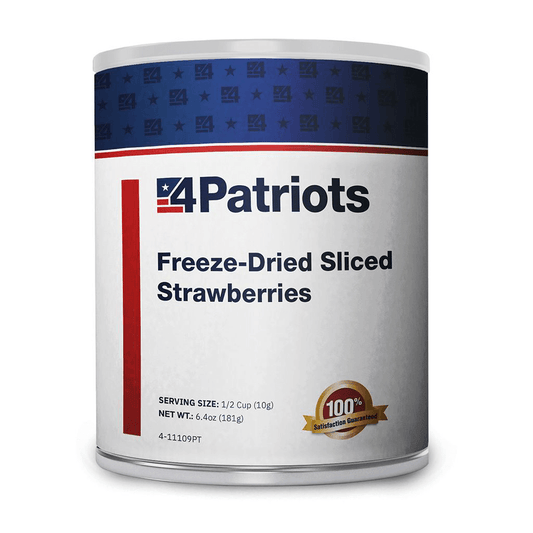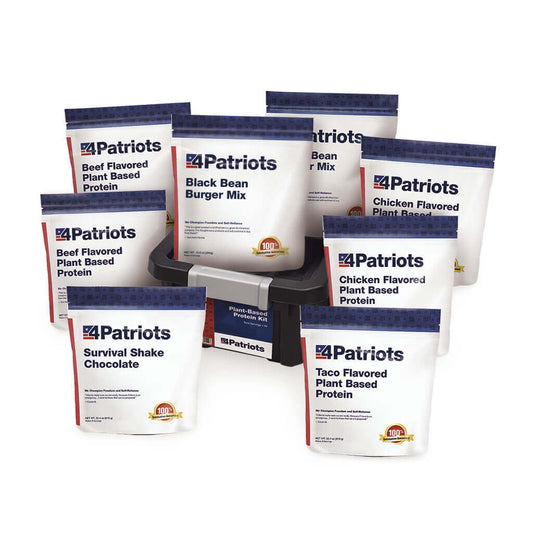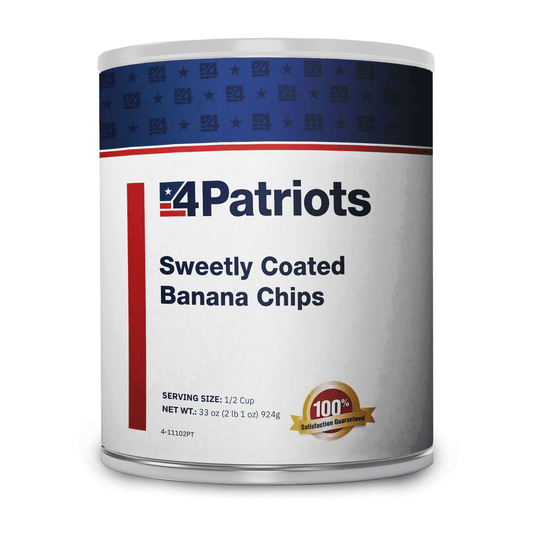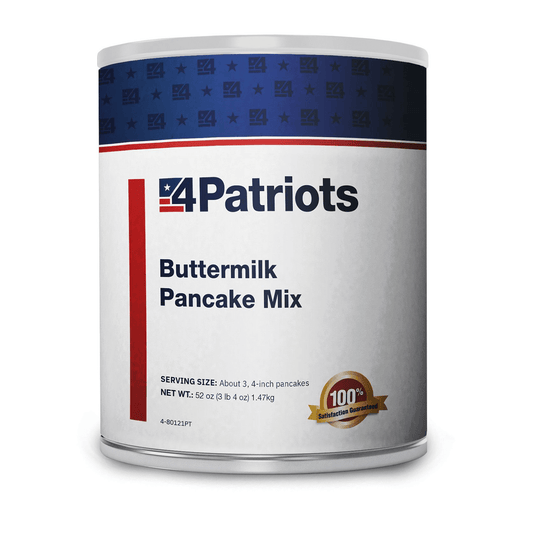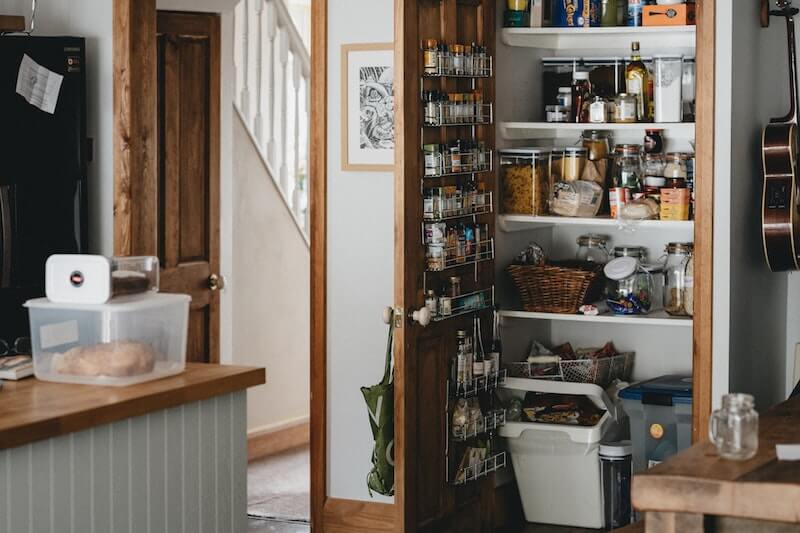
Emergency Food Supply: How To Stock A Pantry

When disaster strikes or an emergency arises, the last thing you want to worry about is whether you have enough supplies on hand. You want to focus your energy on staying safe and taking care of yourself and your family. One way to ensure you are prepared and ready for whatever life may throw at you is having a well-stocked pantry.
Having an emergency food supply should save you time and money while simultaneously bringing you peace of mind knowing that you will not go hungry or have to worry about gathering supplies during an actual emergency. Of course, the hope is that you will never have to endure an emergency or natural disaster, but it’s always better to be safe than sorry.
Whether you choose to go to the grocery store and stock up on non-perishables or make things easy and have one of our freeze-dried food kits on hand for each member of the family, you just want to make sure you are well stocked and well prepared.
Besides food, you should have plenty of water and some essential supplies on hand as well. Do not stress about stocking your pantry; it’s supposed to remove the stress of being prepared for an emergency.
What Should I Have In My Emergency Food Supply?
When creating an emergency food supply, you want to take the specific needs of you and each member of your household into consideration. Are there allergies? Do you have young children who are picky eaters? Choose food items that are quick and reliable, which are also filling and satiating.
If you live alone, you might consider stocking up on items such as meal replacement bars and protein shakes. These are things that are more for adults than children, but children can obviously still consume these foods if need be. The point is, you must first address what you and your family need out of a food supply. Then you can begin stocking your pantry.
Try Freeze-Dried Food
In terms of cost-effectiveness, shelf life, and time-saving, a freeze-dried food kit is by far your best bet. You can purchase one for each member of your family. Each kit is portioned for one person and contains breakfast, lunch, and dinner for a certain amount of days, ranging anywhere from 72 hours up to a full year’s supply.
Our Food Kits have a stable shelf life of up to 25 years; that’s over two decades of not having to worry about food expiring and having food that is safe to eat during an emergency! You can always supplement the Food Kits with extra items and other non-perishables, but if you are looking for food that will fill you up, give you energy, and help you survive, then our Survival FoodKits are perfect for you. We also have extra-large cans of common pantry goods, such as rice, honey, soup, and pancake mix.
Make Sure You Have Water
Something you do not want to overlook is having enough water stocked in your pantry. When it comes to emergency situations, the general rule of thumb is to have one gallon of water per person per day. There are a few ways to go about stocking water.
You can buy large quantities of packs of water bottles. If you do this, you will be able to ration a certain amount of water bottles for each member of your household. Another option (which will be more effective in terms of space) is buying single gallons of water. That way, you know exactly how many jugs of water to buy for each person, as they are already marked as a gallon.
You might also consider purchasing a few five-gallon jugs of water. That way, you know you have a large quantity of water that should not run out for shorter periods of time. If you do this, make sure you have containers/cups on hand for each person.
While these are all good options, there is an alternative to purchasing plastic water bottles and jugs. The most cost-effective and safest option is purchasing a water purifier. You will never have to worry about running out of clean, safe drinking water again if you have a water purifier.
Our water purifiers are highly effective because they remove 99.9% of harmful contaminants. This will also save you money in the long run because you won’t have to constantly re-purchase plastic water bottles. It is also the most eco-friendly option because there won’t be a continuous waste of plastic. Each filter is effective for up to 5,000 gallons of water, which means you can rely on one filter for a very long time.
How Should I Organize My Emergency Food Supply?
A key part of stocking your pantry with an emergency food supply is the organization of it all. You don’t want to just shove things in the pantry when you are stocking up. During an emergency, you want to have everything as stable, organized, and stress-free as possible.
If you are starving or need an essential item in your pantry, you do not want to waste precious time searching through every nook and cranny until you find what you’re looking for. You want to have a straightforward and simple organizational system. It’s quite easy to do.
Once you have all of your supplies, you want to designate shelves or certain areas of your pantry for specific foods, water, and anything else you keep in your pantry. For example, one shelf can be designated for all your freeze-dried food kits. Another spot can be for canned goods and non-perishables.
You can have a section for grains, rice, and pasta. One section should be reserved for your water supply or your water purifier. You can also have a snack or meal replacement section, which contains meal replacement bars, protein bars, protein shakes, and other similar items.
Conclusion
Having a well-stocked pantry that contains an emergency food supply is part of being well-prepared for emergencies. Emergencies can happen at any time, and you do not want to be left scrambling and searching for food when they do happen.
Your emergency food supply should contain enough food and water for each member of your household, as well as basic supplies such as cups and containers. Consider purchasing a water purifier as a way to ensure you are never without clean water. You will save precious time, money, and effort if you simply plan ahead and purchase non-perishable food items and freeze-dried food kits to have ready to go.
Sources:
Featured Products
- Regular price
- From $1,135.78
- Regular price
-
- Sale price
- From $1,135.78
- Unit price
- per
- Regular price
- $353.95
- Regular price
-
- Sale price
- $353.95
- Unit price
- per
- Regular price
- $3,549.48
- Regular price
-
$4,540.26 - Sale price
- $3,549.48
- Unit price
- per
- Regular price
- $3,552.32
- Regular price
-
$4,255.96 - Sale price
- $3,552.32
- Unit price
- per
- Regular price
- From $42.57
- Regular price
-
$170.30 - Sale price
- From $42.57
- Unit price
- per
- Regular price
- $3,552.32
- Regular price
-
- Sale price
- $3,552.32
- Unit price
- per
- Regular price
- $709.33
- Regular price
-
- Sale price
- $709.33
- Unit price
- per
- Regular price
- $41.22
- Regular price
-
- Sale price
- $41.22
- Unit price
- per
- Regular price
- $3,974.51
- Regular price
-
- Sale price
- $3,974.51
- Unit price
- per
- Regular price
- $42.57
- Regular price
-
- Sale price
- $42.57
- Unit price
- per
- Regular price
- $137.89
- Regular price
-
- Sale price
- $137.89
- Unit price
- per
- Regular price
- $7,106.07
- Regular price
-
- Sale price
- $7,106.07
- Unit price
- per
- Regular price
- $71
- Regular price
-
- Sale price
- $71
- Unit price
- per
- Regular price
- From $98.08
- Regular price
-
- Sale price
- From $98.08
- Unit price
- per
- Regular price
- $285.72
- Regular price
-
- Sale price
- $285.72
- Unit price
- per
- Regular price
- From $129.31
- Regular price
-
$184.72 - Sale price
- From $129.31
- Unit price
- per
- Regular price
- $1,420.08
- Regular price
-
- Sale price
- $1,420.08
- Unit price
- per
- Regular price
- $42.57
- Regular price
-
- Sale price
- $42.57
- Unit price
- per
- Regular price
- From $41.93
- Regular price
-
$44.05 - Sale price
- From $41.93
- Unit price
- per
- Regular price
- $183.37
- Regular price
-
- Sale price
- $183.37
- Unit price
- per
- Regular price
- From $38.38
- Regular price
-
$568.31 - Sale price
- From $38.38
- Unit price
- per
- Regular price
- $4,966.71
- Regular price
-
- Sale price
- $4,966.71
- Unit price
- per
- Regular price
- From $282.88
- Regular price
-
$292.12 - Sale price
- From $282.88
- Unit price
- per
- Regular price
- $142.08
- Regular price
-
- Sale price
- $142.08
- Unit price
- per
- Regular price
- $42.57
- Regular price
-
- Sale price
- $42.57
- Unit price
- per
- Regular price
- $12.78
- Regular price
-
$42.57 - Sale price
- $12.78
- Unit price
- per
- Regular price
- $142.08
- Regular price
-
- Sale price
- $142.08
- Unit price
- per
- Regular price
- $42.57
- Regular price
-
- Sale price
- $42.57
- Unit price
- per
- Regular price
- $85.22
- Regular price
-
- Sale price
- $85.22
- Unit price
- per
- Regular price
- $17.03
- Regular price
-
$42.57 - Sale price
- $17.03
- Unit price
- per
- Regular price
- $63.90
- Regular price
-
$63.90 - Sale price
- $63.90
- Unit price
- per
- Regular price
- $35.47
- Regular price
-
$71 - Sale price
- $35.47
- Unit price
- per
- Regular price
- $163.40
- Regular price
-
- Sale price
- $163.40
- Unit price
- per
- Regular price
- $268.66
- Regular price
-
- Sale price
- $268.66
- Unit price
- per
- Regular price
- $709.33
- Regular price
-
- Sale price
- $709.33
- Unit price
- per
- Regular price
- $85.22
- Regular price
-
- Sale price
- $85.22
- Unit price
- per
- Regular price
- $56.79
- Regular price
-
- Sale price
- $56.79
- Unit price
- per
- Regular price
- $85.22
- Regular price
-
- Sale price
- $85.22
- Unit price
- per
- Regular price
- $28.36
- Regular price
-
- Sale price
- $28.36
- Unit price
- per
- Regular price
- $142.08
- Regular price
-
- Sale price
- $142.08
- Unit price
- per
- Regular price
- $98.08
- Regular price
-
- Sale price
- $98.08
- Unit price
- per
- Regular price
- $20.28
- Regular price
-
$31.20 - Sale price
- $20.28
- Unit price
- per
- Regular price
- $213.15
- Regular price
-
- Sale price
- $213.15
- Unit price
- per
- Regular price
- $113.65
- Regular price
-
- Sale price
- $113.65
- Unit price
- per
- Regular price
- $56.79
- Regular price
-
- Sale price
- $56.79
- Unit price
- per
- Regular price
- $163.40
- Regular price
-
- Sale price
- $163.40
- Unit price
- per
- Regular price
- $56.79
- Regular price
-
- Sale price
- $56.79
- Unit price
- per
- Regular price
- $142.08
- Regular price
-
- Sale price
- $142.08
- Unit price
- per
- Regular price
- $35.47
- Regular price
-
- Sale price
- $35.47
- Unit price
- per
- Regular price
- $35.47
- Regular price
-
- Sale price
- $35.47
- Unit price
- per



